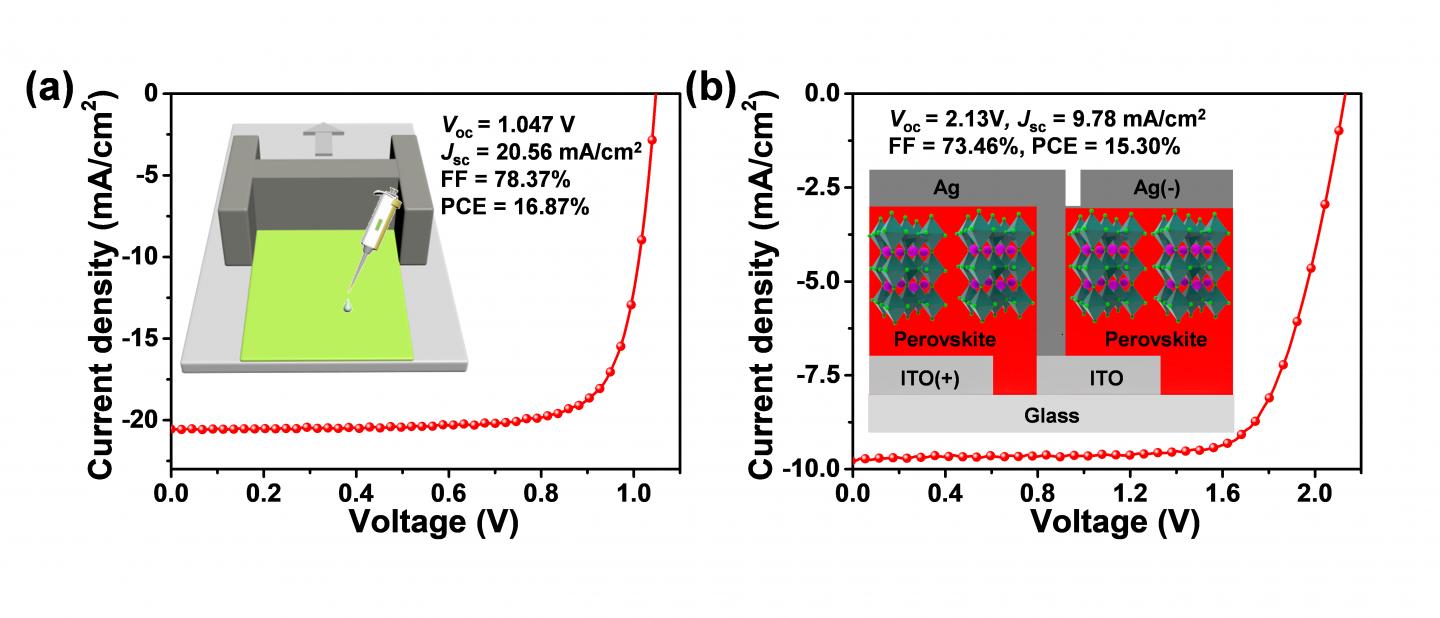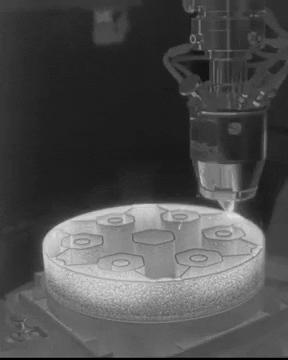
Pero-SCs based on blade-coated BDT-TPA-sTh HTL and MAPbI3 active layer: (a) J-V curves in the reverse-scan direction; inset: schematic illustration of blade-coated HTLs. (b) J-V curves of a 1-cm2 pero-SC module in the reverse-scan direction; inset: schematic illustration of device-structure of modules.

The Transformational Challenge Reactor Demonstration Program uses thermal imaging to actively monitor the direct deposition of stainless steel to 3D print a component. The hexagonal structure took close to 40 hours to build, with temperatures reaching over 1,400 degrees Celsius around the melt pool where a laser heats and melts while adding a new layer.